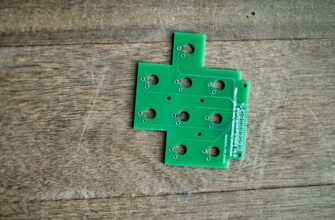- Why Your MetaMask Needs a Hardware Wallet
- Top 4 Hardware Wallets for MetaMask
- Step-by-Step: Connecting to MetaMask
- Hardware Wallet FAQ for MetaMask Users
- Can I use any hardware wallet with MetaMask?
- Do hardware wallets support all MetaMask networks?
- What happens if I lose my hardware wallet?
- Are hardware wallets compatible with MetaMask Mobile?
- How often should I update firmware?
- Final Security Recommendations
Why Your MetaMask Needs a Hardware Wallet
MetaMask revolutionized crypto access through browser extensions and mobile apps, but its hot wallet nature leaves assets vulnerable. Hardware wallets provide military-grade security by storing private keys offline in a physical device. When paired with MetaMask, you get the perfect balance: seamless Web3 access with unhackable cold storage. Transactions require manual confirmation on the hardware device, making it impossible for remote attackers to drain funds—even if your computer is compromised.
Top 4 Hardware Wallets for MetaMask
After rigorous testing, these wallets deliver flawless MetaMask integration and top-tier security:
- Ledger Nano X (Best Overall) – Bluetooth/USB connectivity works with MetaMask Mobile and Desktop. Supports 5,500+ coins, features a crisp display for transaction verification, and includes a secure element chip. Ideal for active traders.
- Trezor Model T (Premium Pick) – Touchscreen interface simplifies MetaMask approvals. Open-source firmware with Shamir Backup. Supports ERC-20 tokens natively. Perfect for Ethereum-heavy portfolios.
- Ledger Nano S Plus (Budget King) – Affordable yet powerful. USB-C connectivity, large screen for verification, and supports all major MetaMask networks. Limited app storage requires occasional management.
- Keystone Pro (Air-Gapped Security) – QR-code based signing creates absolute isolation from internet threats. Large touchscreen and fingerprint sensor. Supports ETH, Polygon, BSC via MetaMask.
Step-by-Step: Connecting to MetaMask
Secure setup in 5 minutes:
- Initialize your hardware wallet and write down the recovery phrase
- Install wallet-specific bridge software (Ledger Live/Trezor Suite)
- In MetaMask: Click profile icon → Connect Hardware Wallet
- Select your device model and connect via USB/Bluetooth
- Choose accounts to import and confirm permissions on hardware device
Pro Tip: Always verify receiving addresses on your hardware wallet screen before approving transactions.
Hardware Wallet FAQ for MetaMask Users
Can I use any hardware wallet with MetaMask?
Most major brands (Ledger, Trezor, Keystone) support MetaMask via USB, Bluetooth, or QR codes. Avoid obscure brands without established security audits.
Do hardware wallets support all MetaMask networks?
Yes, including Ethereum, Polygon, BSC, Arbitrum, and other EVM-compatible chains. Your hardware device secures keys regardless of network.
What happens if I lose my hardware wallet?
Use your 24-word recovery phrase to restore assets on a new device. Never digitize this phrase—store it physically in multiple secure locations.
Are hardware wallets compatible with MetaMask Mobile?
Ledger Nano X (via Bluetooth) and Keystone (via QR) work seamlessly. USB devices like Trezor require OTG cables for Android.
How often should I update firmware?
Install updates immediately when notified—they patch critical vulnerabilities. Always verify update authenticity through official apps.
Final Security Recommendations
Pairing MetaMask with a hardware wallet eliminates single-point-of-failure risks. For maximum protection: 1) Always buy devices new from manufacturer sites, 2) Enable passphrase encryption, and 3) Regularly verify transaction details on your hardware screen. Whether you choose the versatile Ledger Nano X or budget-friendly Ledger Nano S Plus, you’re transforming MetaMask from a convenience tool into a fortress for your digital wealth.








